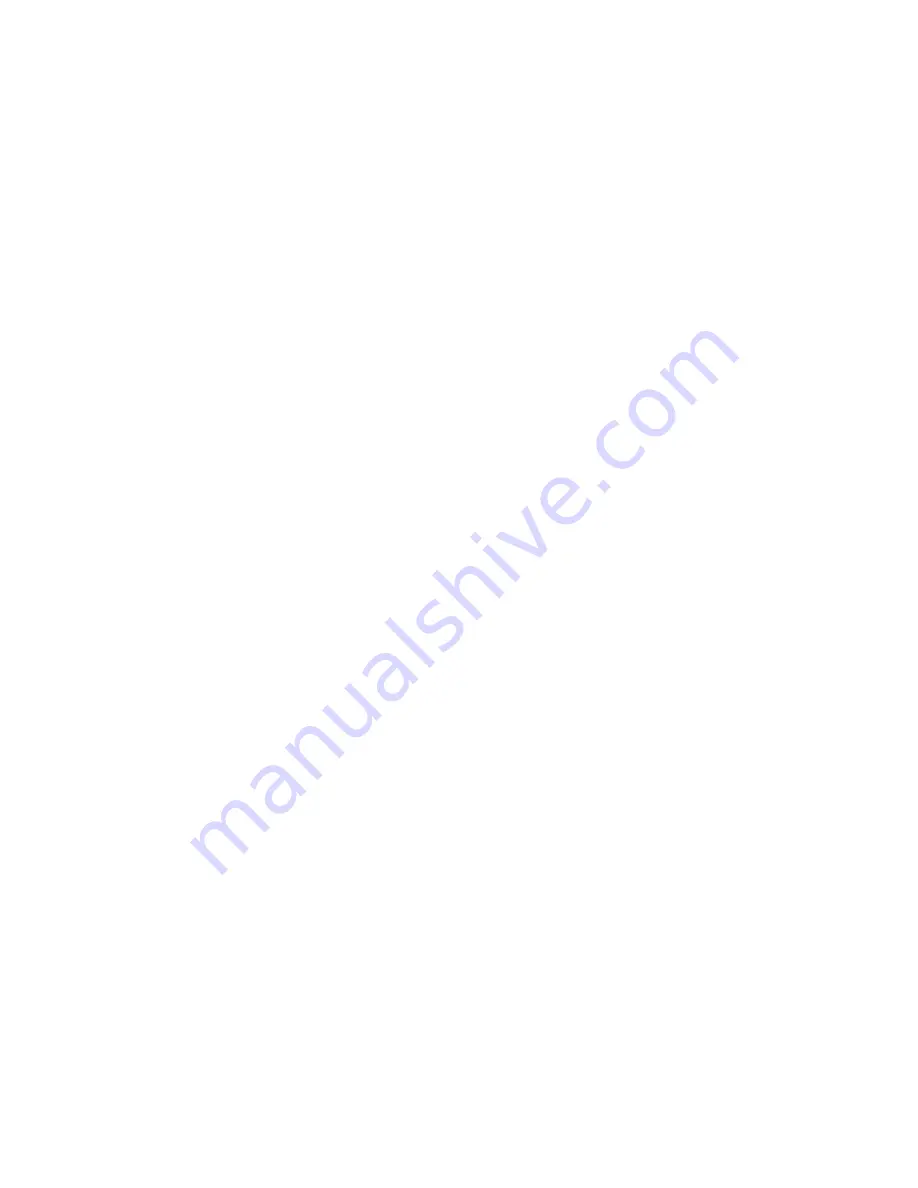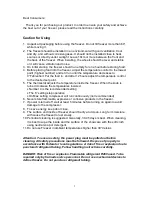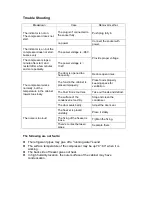
2
ATTENTION: pour assurer la sécurité, la fiche d'alimentation doit être retirée
avant le nettoyage. Toutes les précautions de sécurité doivent être respectées.
Disposer correctement conformément aux réglementations fédérales ou
locales. Risque d'incendie ou d'explosion dû à la perforation du tube
réfrigérant. Suivre la manutention instrucitons soigneusement.
Danger: risque d'incendie ou d'explosion. Réfrigérant inFlammable R290
utilisé. Être réparé uniquement par un technicien qualifié. N'utilisez pas de
dispositifs mécaniques pour dégivrer le réfrigérateur. Ne pas perforer le tube
réfrigérant.
Food Storage
l
Do not over fill the freezer, leave space between items and the inner surface to
freeze product evenly. Do not put bottled or canned beverage with a freezing
point above the temperature in the cabinet.
l
Storage of volatile and combustible gases, liquids such as strong alkalies,
strong acids, petrol, etc. is forbidden.
l
Never put hot food directly in the freezer
l
The cabinet is intended exclusively for the storage and/or display of packaged
foods only.
Maintenance
l
The freezer should be cleaned regularly. When cleaning, turn off the power, empty and
clean using detergent.
l
Do not use boiling water, acid, chemical diluents, petrol and oil, or dirt- removing
powder.
l
Dry after cleaning.
l
Use light soap water when cleaning the door seal; apply a small amount of talcum
powder on it after drying to extend its service life.
l
Use soft cloth and soap water to clean the outer surface.
l
An unauthorized repair of electrical part is forbidden.
Defrosting
l
For better freezing efficiency, defrost when the frost film in the cabinet is 4-5mm thick.
l
When defrosting, turn off the power; empty cabinet, and keep door open to melt the ice.
Use soft cloth to absorb water.
l
Do not use sharp metal tools such as steel brush to clean the frost.






















